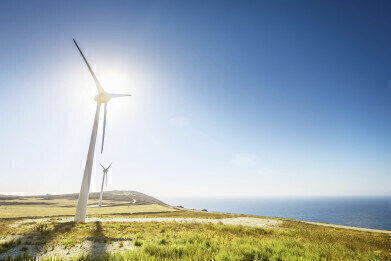Green energy
The Demise of Coal Still Far to Come
Aug 21 2013
The coal-based power generation seemed to be in terminal decline in Europe. However, during the past couple of years coal plants have been working hard and burning coal has suddenly become popular once again. This is happening despite the EU’s aim to reduce carbon emissions to 80 per cent of their 1990 levels by 2020.
A number of factors have combined to make coal the most popular thermal fuel under current conditions.
"Firstly, the North American shale gas revolution had a direct impact on the coal market," explains Frost & Sullivan Energy Industry Director Harald Thaler. "Rising shale gas output has made the US independent of gas imports and has led to a dramatic decline in the price of natural gas. As North American utilities started to switch away from coal towards cheap natural gas, a growing amount of coal was exported rather than consumed locally. Rising American coal exports also came at a time of slowing Chinese demand, which in combination prompted declines in coal prices. It is not surprising, therefore, that lower coal prices make the fuel much more attractive for European utilities."
The second point to note is that natural gas prices in this part of the world remain stubbornly high. As European gas is still largely supplied through long-term contracts where the price is linked to the price of oil, the price difference between coal and gas in the European market has become ever larger, making European utilities eager consumers of coal.
The third point is the failure of the European Emissions Trading System (EU ETS), which essentially was not able to penalise coal-burning plants.
"High coal usage is still expected to continue for several more years, though to a lesser extent, as some ageing coal plants get decommissioned," predicts Mr Thaler. However, there is considerable coal capacity under construction, in particular in Germany and the Netherlands, with most of this new capacity coming online in late 2013 and 2014. Beyond the EU, new plants are also under construction in Turkey and the Balkans. In addition, two coal plants have just been completed in Germany.
Beyond what is currently under construction, however, the future projects pipeline looks fairly weak. The key German market, which is seeing substantial capacity additions due to the projects currently under construction, still suffers from overcapacity despite the looming gradual phase-out of nuclear power. German winter peak demand is typically below 88 GW, compared to 77 GW of conventional thermal power station capacity alone. There is also little need to new thermal capacity in other Western European market, which are suffering from a deadly combination of rising renewables output and weak or falling electricity demand.
The prospects for coal plant orders in Western Europe over the next few years are therefore extremely limited, given existing thermal overcapacities, weak industrial demand and strong opposition to coal plants. However, in Europe as a whole, there will be a few hotspots of activity amidst a generally depressed European outlook. The EU country with the best outlook for new coal plants is Poland, although the story even there is one of slowing down investment. In the longer term, there could be a challenge to coal’s dominance in the Polish power sector from shale gas but only over the next few years will it become clearer how much gas is actually realistically extractable.
The other large European market for new coal plants will be Turkey. Driven by a rapidly expanding economy and a desire to reduce its reliance on imported natural gas, the country is seeing significant coal investments. Turkey has seen higher order numbers in terms of units, but the size of these plants is smaller and they have tended to be of the subcritical variety.
Apart from Poland and Turkey, there are also expected to be opportunities in the Balkans. Countries such as Serbia, Kosovo and Bosnia-Herzegovina will offer the best prospects. The region does not participate in the EU’s carbon trading scheme (though recent developments make this increasingly less relevant) and there is less opposition to coal plants compared to Western Europe. Moreover, there is the potential for power exports as the region as a whole has fairly tight reserve margins and governments are keen to utilise abundant local coal reserves.
The overall picture in Europe is therefore mixed. Business is currently good for operators of existing coal plants, with high utilisation of such plants also expected to give a boost to providers of service and maintenance solutions for several more years. On the other hand, near-term developments in coal plant new-build are effectively limited to parts of Central & Eastern Europe and Turkey. Over the longer term, only a successful commercialisation of Carbon capture and storage (CCS) will reignite coal project development in the core markets of Western Europe, but this is not expected before 2030.
Events
Jul 15 2025 Brighton, UK
Jul 23 2025 Sydney, Australia
Aug 24 2025 Stockholm, Sweden and online
Aug 27 2025 Busan, South Korea
Sep 02 2025 Mexico City, Mexico














